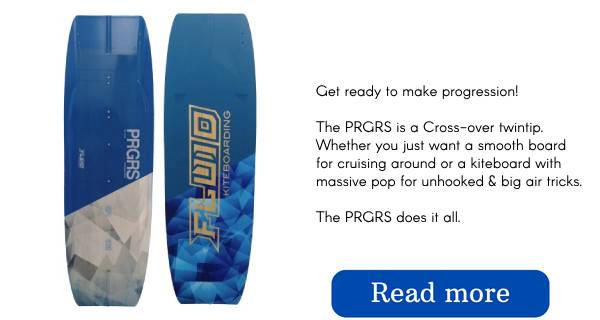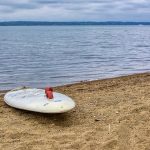Many kayak anglers would agree that fishing from a kayak is a simple, budget-friendly method of spending time fishing on the water.
You can navigate a kayak in both brackish and sea water with ease, though it is suggested to keep away from high-traffic shipping pathways. Many may consider it the perfect outdoor recreation activity.
Why is kayak fishing good?
If you’ve been fishing from the shore and are interested in fishing in the water, investing in a kayak can be a fantastic place to begin.
Almost anyone can manage to use a kayak because they do not require a lot of muscle power to use; indeed, kayaking may in fact help you stay in shape, since it is powered by a paddle.
Can you fish from a regular kayak?
A kayak of any kind is apt for angling, but selecting a version specifically manufactured for that purpose is best, especially for first-timers in the sport.
One can become overwhelmed with all the suggestions when reading many fishing articles, but not all of them will be helpful when seeking advice regarding kayak fishing basics. Here are a few features you may want to think about:
- Elevated seating
- Multiple flush mount rod holders
- Paddle holder & safety strap
- Suitable storage – enclosed hatch and bungee straps
- Fish Finder mounts
- Overall weight
- Side-tracks to install swivel rod holders
- Storage area for lures and baits
Evaluate where you plan to use it and your existing proficiency before buying a fishing kayak. If you are new to something, try to find something with dependability and a lot of storage areas.
As you advance in your abilities, you could choose to switch to a board that values speed over stability later on. Choose a kayak that has an adequate number of mounts and rod holders and determine how many rods you will require.
Can you fish while kayaking?
You can catch fish from a kayak by staying in one place, but you can also do it while you’re in motion. Getting a trolling engine and rudder system for your kayak can be advantageous in allowing your fingers to be free for throwing out a line.
Although having a tandem kayak, one person can take up the task of paddling while the other person can sit back and do some fishing.
What is the best bait for kayak fishing?
The kind of bait you select should be decided by the type of fish you want to catch. Given the space constraints, it is wiser to pick baits or lures that do not require a lot of set-up. It is recommended that you cut up your bait, if that is the type you have chosen, before going fishing.
Some fishers prefer to not use bait and instead use lures to try to catch fish. Some fisherman will have a variety of rods ready to use, with several of them having bait on them and placed into flush mount rod holders. They will use one rod with a lure.
Having multiple lines attached to your rods is not the most convenient thing, yet it is something any fisherman would rejoice to experience, as more than one fish could be caught at once!
Is it hard to fish from a kayak?
When using a kayak to fishing, one will realize that the experience is different from other ways of fishing. Adapting to the correct techniques of managing a rod and understanding the dynamics of fishing while casting and reeling in fish is the toughest part to master.
The kayak’s limited capacity poses a challenge to certain individuals, while others find this limitation adds an intriguing element as they must plan their excursions more carefully.
The advantages of kayak fishing far exceed any potential disadvantages in comparison to other fishing techniques. You can access areas that most people cannot, and fishing kayakers experience a strong sense of friendship and unity.
An experienced kayak fisher knows what obstacles there are and is usually very willing to provide advice to those just starting out.
What experience is needed for kayak fishing?
If you have gone fishing from boats or the shoreline before, it is wise to practice the fundamentals of maneuvering a kayak before going out on the water.
Look for an area of calm water on a day with little wind and practice maneuvering the kayak until you feel confident in your ability to direct it. Once you are familiar with the fundamentals such as stroking, navigating and how to enter the kayak from the water, then you are ready to take off.
How to get started fishing from a kayak?
If you have mastered kayaking, then the next logical thing to do is to acquire some fishing equipment and learn how to fish. Gaining insight from YouTube videos and asking questions at tackle shops are great ways to get good advice.
Make sure you inform people about the task you intend to accomplish and they will provide you with a useful recommendation for the fishing rod, supplies, and bait to use.
How dangerous is kayak fishing?
Before setting sail on the sea, it is important to acquaint yourself with the customary behavior connected to boating. It is your responsibility as a smaller vessel to move aside for a bigger one.
It is essential to be equipped with a personal flotation device (PFD) or a lightweight inflatable life vest and an emergency beacon, like an EPIRB, when venturing into deeper waters.
In some regions of Australia, acquiring a marine permit might be essential if your vessel is equipped with a propulsion system. It is recommended to consult your local authorities in regards to any licensing requirement, though a lot of less powerful trolling systems are not included.
What safety equipment do I need for a kayak?
You should always have a proper life jacket on when you are around water. Look for a personal flotation device (PFD) that will permit your arms to move freely.
Removing your arms from anything that is restrictive will help when you are rowing with an oar. Put on a variety of styles of life jackets (PFDs) and observe how it changes the movement of your arms when you fully rotate them.
An inflatable personal flotation device is a good selection for skilled swimmers who don’t want the cumbersomeness of life vests and want the full scope of arm range of motion.
It is a good idea to occasionally practice swimming with a life jacket. A good life jacket (PFD) should fit snugly without being constrictive. It should also not be so loose that it slides around uncontrollably. Achieving a sense of equilibrium will ensure a suitable fit.
Different Australian states have punishments for not wearing a life preserver, so see what the regulations are in your state.
Learn About Fishing Kayaks
In many cases, you’ll discover that kayak angling crews have been created in your area, kayak angling tour operators are ready to bring you to your chosen species, and online kayak angling forums are active with individuals such as yourself, as well as experienced pros sharing tips.
You can access all of these services before you purchase a kayak. Shortly, you’ll comprehend why victorious kayak fishers are relying on and the rewards it offers. As you discover this data, you will see numerous people who proclaim to be specialists.
Listen to them and learn from their experiences. This activity is not too long established, however, you will see that the people who get involved in it are quite enthusiastic. They might not let slip their best fishing spots, but they are very willing to let you know where it’s best to launch your boat and offer advice on the right equipment to use.
The people who kayak really take pride in their activity! The majority of those who possess a fishing kayak are of the opinion that the one they possess is the superior one obtainable in the marketplace, and they are right.
Today’s fishing kayaks typically come in two varieties – “angler” versions that are ready to be used without additional assembly, and stock versions that require customization before they can be used.
Due to this, those who utilize paddleboats usually customize their craft to meet their particular requirements and desires. At the end of the day, what ultimately makes the top fishing kayak.
What Are Your Kayak Fishing Goals?
Will you be fishing in different types of environments, such as freshwater and saltwater, farm ponds and large lakes, rivers that move slowly, offshore, in warm and cold water, getting your boat in the water from a dock, shoreline, or other small openings, or doing multiple types of fishing?
Are you okay with bringing a minimum amount of supplies, or will you sometimes require extra equipment for family camping trips? Begin your travels by thinking of the outcome you want, which will assist in decreasing the amount of decision-making options.
As you narrow your list of options, particular kinds of fishing kayaks will become more identifiable. One of those is yours.
Sit-On-Top Fishing Kayak or Sit-Inside Fishing Kayak?
Most kayak anglers prefer the sit-on-top variety of kayak. This facilitates the attachment of extras, as well as enables them to go out and wade.
However, this can be a wet ride at times. Some folks prefer to angle from “cockpit” design kayaks, which are basically common sit-in kayaks featuring a far bigger open cockpit.
Cockpit boats are superb for angling in cold temperatures, and a lot more comfortable when taking out to sea. When you’re inside the boat, your balance is better because the center of gravity is in a lower position.
Getting out of a boat of this kind is more difficult if you want to go into the water.
Speed vs. Stability, Length vs. Width, & Other Trade-Offs
This is a struggle between right and wrong, so to say. Longer kayaks are normally faster than shorter ones. Wider kayaks are normally more stable than narrower ones. Kayaks with “rocker” (curved bow) do nicely when there are waves and waterflow, but they do not work as well on still water.
Don’t blame the manufacturers. The laws of physics can be held responsible for the fact that all things that float. Frequently, inexperienced paddlers notice that the craft that seemed steady initially soon appears to be sluggish.
As the paddlers gained more experience, their sense of balance and self-assuredness increased – they are becoming more proficient at the activity. It’s like learning to ride a bike. Keep in mind that your aptitude for testing kayaks will get better as you keep doing it.
Consult the Experts; Try Before You Buy!
Look for a store near you that sells kayaks and quiz them for tips and advice. Also, peruse reviews about fishing kayaks on paddling.com, and try out as many kayaks as possible, including the ones you don’t think you’d like. You can rent a kayak from numerous vendors and some of that money can be credited to the purchase of a new kayak.
It can be challenging to come to an educated conclusion about what fishing kayak is ideal for you based solely on a brief paddle or other people’s viewpoints. Dealers may be able to offer lessons on the proper way to paddle.
You should aim to get to your fishing destination in the quickest and most effective way possible, even though that is the end goal. A great approach to understanding kayak fishing is to hire a guide. It will be worthwhile to invest in this for numerous reasons.
The instructor will equip you with a kayak designed to make it uncomplicated and fruitful to fish for someone who is just starting out. They can provide you with all the necessary advice to have a secure and successful day out on the water.
Generally, you will be using equipment that belongs to them, so there’s no need to bother about submerging your most beloved fishing rods.
It is especially important for them to help you land some fish. After all, that’s what this is about anyway.
Fishing Kayak Transportation & Storage
Once you have determined the kayak that is the best fit for you, you must then find a way to transport it back to your house. The dealer from which you buy the item will most likely have whatever you need to transport it in your car or truck – they really wish for you to be able to take it out of their shop.
There are some amazing trailers, racks on the roof, trolleys, and belts available for travelling nowadays. It’s feasible to build a rack for a truck with home improvement store items and only cost around $100 if you’d describe your skill level as quite adept.
Once you bring it back, you have to decide where the best place to keep it is. There are shelving, holders, and enclosures available for virtually all individuals.
It appears that the extended family won’t be able to find a place for the new relative since no one wants a bulky plastic coffee table that is 14 feet in length; thus, it is likely the individual will need to stay in the yard or the garage.
Bear in mind that plastic is not suited to being exposed to strong or sustained exposure to the sun’s rays or heat.




